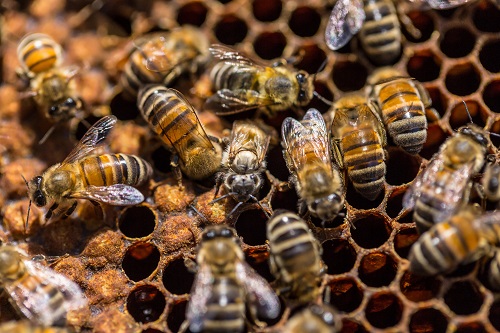Can Bees Be Bred to Resist the Varroa Mite?
July 25, 2019
It is no secret beekeepers throughout the world are struggling to keep their hives healthy. On a regular basis, beekeepers are fighting pesticides, weather, and sloppy newcomer practices, all of which are leading to record losses in recent years. In addition to those problems, there is one more challenge that may, in fact, be the biggest challenge… the threat of the Varroa mite.
The Varroa mite has been decimating hives for decades in virtually every part of the world except Australia and some very small island areas. While many people are only recently hearing about this mite, it has, in fact, been a problem for quite some time. An obvious question is if bees have been subject to this mite for that long, how have they not overcome it with through natural selection. In a way, they have, but the practices of beekeepers have also helped extend the crisis.
A new report has offered some very interesting insight into the history of how the Varroa mite came to be so devastating to the honey bee population. As it turns out, Asian honey bees have actually grown resilient to the Varroa mite through, among other things, grooming practices. Additionally, the natural behavior patterns of these bees have made them better able to deal with the Varroa mite problem. While not necessarily immune to the mite, they have figured out how to limit the damage.
European honey bees, however, have had far more problems due to the less aggressive nature of this breed of bee. This bee is far more popular with beekeepers due to the fact they keep much larger hives and the worker bees are far more docile than their Asian counterparts. When beekeeper practices are factored in, such as keeping hives in close quarters, they only make the mite that much deadlier to the honey bee population.
Daniel Weaver is a Texas bee breeder that took on the Varroa mite in the 1990s and won, almost at the expense of his business. Rather than use pesticides or other treatments to fight off the mites, he simply left it to the bees to fend for themselves. At the time of his experiment, he had 1,000 hives. At the end of the first year, he was down to nine. He called it a “painfully expensive experience,” but it did pay off over the long run. He was able to breed mite-resistant bees from those nine hives to more or less end the Varroa mite problem in his hives for future years.
Greg Hunt, who previously worked as a bee biologist at Purdue University, stated, “You can reduce the use of treatments, increase your survival, and reduce the number of colonies that you need to replace every year.” It sounds great, but the challenge for beekeepers is going to be to find breeders like Weaver who have already bred mite-resistant bees to integrate into hives. It will definitely be a challenging undertaking but with current loss rates and mite problems, beekeepers may have no choice but to assimilate if they want to stay in business and protect the honey bee from going extinct.
Source: Science Mag


.jpg)




